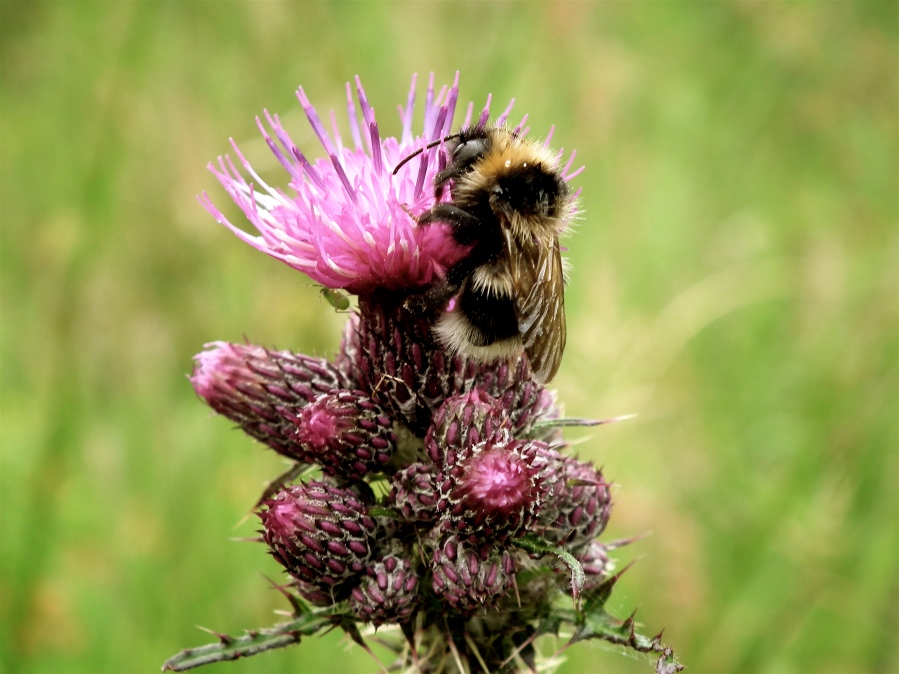Bee expert Nick Owens initially taught us how to identify 'the big six' bumblebees (red-tailed, garden, white-tailed, buff-tailed, early and common carder). With each having 3 different forms (queen, worker and male) this immediately gives 18 forms to recognise. Additionally, each has a corresponding 'cuckoo' species which parisitises them by taking over a nest (kleptoparasatism!)and benefiting from the host species workers' endeavours. These therefore closely resemble one of those 6 common species (e.g. the Barbut's cuckoo-bee, Bombus barbutellus, resembles the Garden bee, Bombus hororum) but can be discriminated from them by features such as the absence of pollen baskets (as the workers from the host species provide this function.) Throw in mimic hoverflies and moths and the novice bee-spotter can be quite overwhelmed!
 |
| Common spotted orchid |
 | |
| Barbut's cuckoo-bee |
It was a great introduction to these fascinating creatures, and certainly whetted my appetite to learn more about them, as well as to apply the new knowledge in our own backyard.

No comments:
Post a Comment